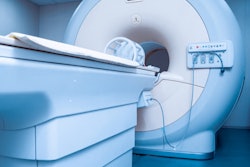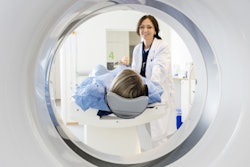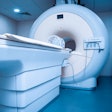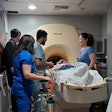
A global patient scheduling initiative can yield significant improvements in radiology workflow and metrics in hospitals, as well as enhance staff satisfaction, according to a presentation on August 3 at the 2021 AHRA meeting in Nashville, TN.
Jane Fry, radiology director at Lee Health in Florida, shared the institution's successful implementation of a global patient scheduling initiative aimed at improving patient throughput. A clinical order coordinator -- a position added as part of the new program -- has made a huge difference in their radiology department.
"An order coordinator can help alleviate the workload of the technologist, see the big picture of the patient and what the patient needs in the hospital, and prioritize what exams need to be done first," she said.
Every hospital wants to get patients through as efficiently and as safely as possible. And imaging is a key component for reaching that goal.
"Whether the patient comes through the [emergency department] or whether the patient comes in as a direct admit or post-surgery, imaging is involved in absolutely every step of the journey from admission to discharge," Fry said. "So it's critical that we have a clinical order coordinator to help coordinate all of the patients."
A more efficient workflow
The radiology department has really benefited from the global patient scheduling initiative, according to Fry.
"Prior to the implementation of this system, each modality -- whether it be x-ray, nuclear medicine, or CT -- lived in their own little bubble, calling patients down as they got a requisition for the exam without much coordination within the department," she said.
After the order was received, a requisition would then be submitted to the nursing unit to have the patient transported to the radiology department for the study. Sometimes, however, the patient wasn't ready when transportation arrived. For example, a patient might be in the middle of a breathing treatment and transport was sent away, she said.
"It was not uncommon to have 45-minute or hour delays as to when you expected a patient," Fry said. "And if it was a physician-related procedure like an aspiration study or a fluoro study, a lumbar puncture, or an interventional study, you had a radiologist's time tied up with that as well."
Those delays compounded and led to a domino effect that resulted in overtime, as staff were having to stay later to handle all of the patients, Fry said.
"The order coordinator sees the big picture of what's going on with the patient in the entire continuum of care and can help coordinate when patients come to [radiology]," she said.
Prioritizing and prepping exams
The order coordinator prioritizes exams that need to be done first. For example, she can schedule all patients who are in the observation unit earlier in the day, because those patients can often be discharged after their exams, Fry said.
What's more, the order coordinator can make all of the calls for the prep work for the exams, such as checking if the patient has a contrast allergy, according to Fry.
"If the patient has a contrast allergy for CT, that nurse who's the order coordinator can then implement the protocol for premedication and get that patient appropriately medicated so that the patient is coming to us at an appropriate time for their CT with contrast versus the patient coming down and then [we] find out the patient needs premedication," she said. "So she's taking a lot off the plates of the technologists, which then allows the technologists to scan, in which we're more efficient."
Even though imaging volumes may increase, there isn't the need to increase staff as the system has alleviated a lot of the extra clerical work for the technologists that others can do, Fry said.
"There's only a small group of people in every institution who can do a CT, who can do an x-ray," she said. "You want your clinical people doing the clinical work and this takes that burden off of them."
The initiative has led to quantifiable improvements in radiology metrics.
| Improvement in radiology metrics after adoption of global patient scheduling initiative | ||
| Before patient scheduling initiative | After global patient scheduling initiative | |
| Average time from study order to completion | 1 hour, 45 minutes | 36 minutes |
| Average time from completion of exam until dictated final report | 2.2 hours | 33 minutes* |
Getting staff buy-in
Change management was important to win buy-in from the staff, according to Fry. In small groups of four to six people, staff members brainstormed on areas that wouldn't work under the new process. The group then collaborated to develop an action plan to manage every possible problem that they could foresee.
"You're hearing their concerns, and you're involving them in the resolution of the problem," Fry said. "When you've got that [staff] buy-in, things work much better."
When asked recently about all of the good things that have happened last year, staff unanimously highlighted the order coordinator, Fry said.
"[She] has made their lives so much better and more efficient and they can't imagine life without her," she said.




















